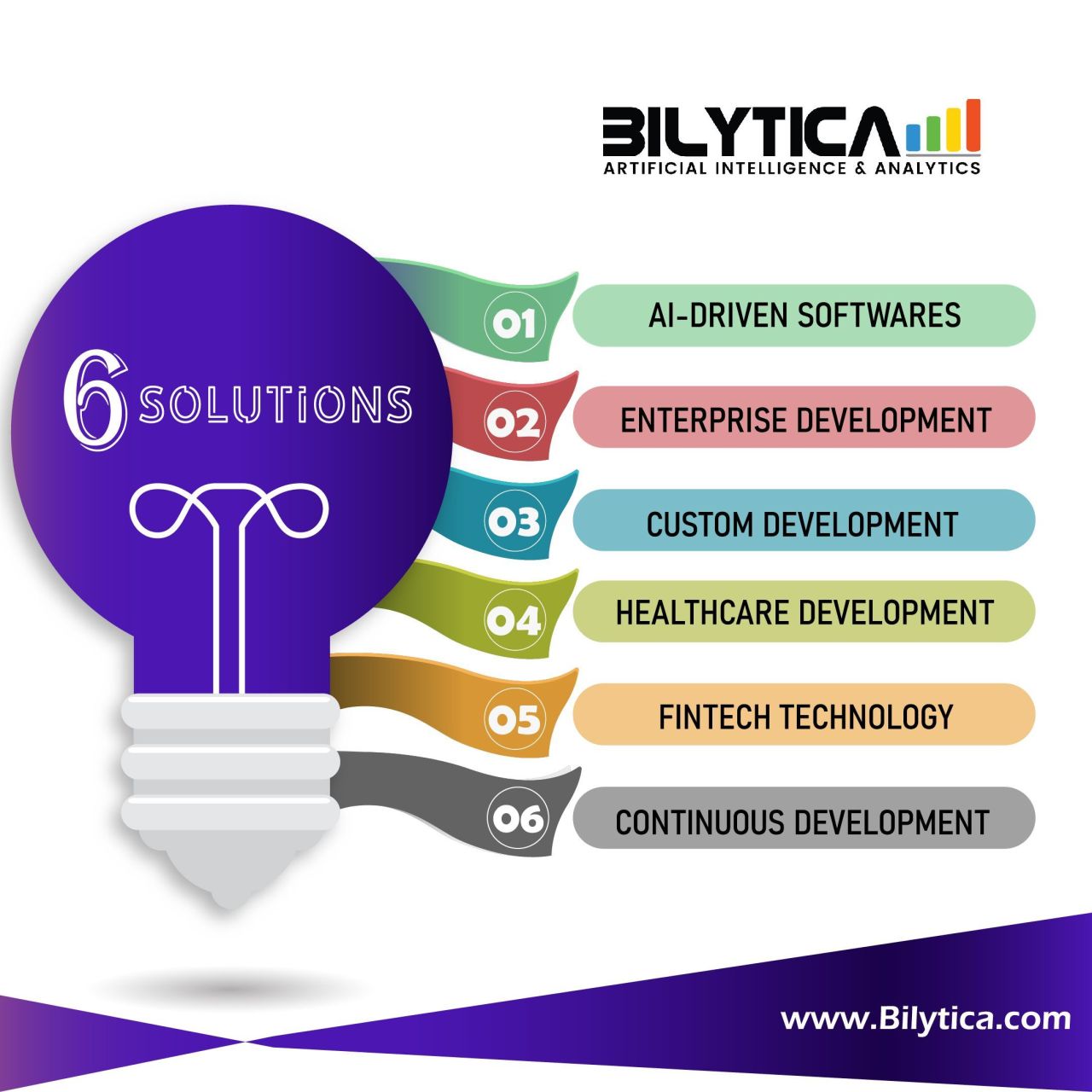Bilytica # 1 is one of the top BI has become an indispensable tool for organizations seeking to gain insights from their data, drive informed decision-making, and stay competitive in a data-driven world. However, while the benefits of BI are clear, the path to successful implementation is often fraught with challenges. Implementing a BI system requires careful planning, resource allocation, and ongoing management. This article explores the common challenges organizations face during BI implementation and offers insights into how to overcome them.
Click to Start Whatsapp Chat with Sales
Call #:+923333331225
Email: sales@bilytica.com
Bilytica #1 BI

Data Quality and Integration Issues
Inconsistent Data Sources
One of the primary challenges in BI implementation is dealing with inconsistent data sources. Organizations often have data stored in various formats across multiple systems, including databases, spreadsheets, and legacy applications. This data may be incomplete, outdated, or stored in incompatible formats, making it difficult to integrate into a unified BI system. Inconsistent data can lead to inaccurate analyses and misleading insights, which can undermine the effectiveness of the BI initiative.
Data Cleansing Requirements
To address data quality issues, organizations must invest in data cleansing processes. Data cleansing involves identifying and correcting errors in the data, such as duplicate records, missing values, and incorrect entries. This process can be time-consuming and resource-intensive, especially for large organizations with vast amounts of data. Failure to cleanse the data adequately can result in poor data quality, which in turn affects the reliability of the BI system.
Integration Complexity
Integrating data from disparate sources into a single BI platform is another significant challenge. This integration often requires specialized tools and expertise, as well as a deep understanding of the organization’s data architecture. The complexity of integration can be exacerbated by the need to reconcile different data structures, formats, and terminologies used across various systems. Without proper integration, the BI system may not provide a comprehensive view of the organization’s data, limiting its effectiveness.
High Implementation Costs
Initial Investment
Implementing a BI system can be expensive, particularly for small and medium-sized enterprises (SMEs). The initial investment includes the cost of purchasing BI software, hardware, and infrastructure, as well as the expenses associated with data migration, integration, and customization. Additionally, organizations may need to hire external consultants or experts to assist with the implementation, further increasing costs.
Ongoing Maintenance Costs
Beyond the initial investment, organizations must also consider the ongoing costs of maintaining and updating the BI system. This includes expenses related to software licensing, hardware upgrades, and IT support. Organizations may also need to invest in training for their staff to ensure they can effectively use and manage the BI system. These ongoing costs can add up over time, making BI implementation a significant financial commitment.
Return on Investment (ROI) Concerns
Given the high costs associated with BI implementation, organizations often face challenges in demonstrating a clear return on investment (ROI). It can take time for the benefits of BI to materialize, and organizations may struggle to quantify these benefits in financial terms. This can make it difficult to justify the investment to stakeholders, especially if the expected ROI is not immediately apparent.
Change Management and User Adoption
Resistance to Change
Change management is a critical aspect of BI implementation, and one of the most common challenges organizations face is resistance to change. Employees who are accustomed to existing processes and tools may be reluctant to adopt a new BI system, particularly if they perceive it as complex or unnecessary. This resistance can stem from a lack of understanding of the benefits of BI, fear of job displacement, or simply a preference for the status quo.
Lack of User Training
To ensure successful user adoption, organizations must invest in comprehensive training programs for their employees. However, inadequate training is a common challenge during BI implementation. Without proper training, users may struggle to understand how to use the BI system effectively, leading to low adoption rates and suboptimal use of the technology. Training programs should be tailored to the specific needs of different user groups, ensuring that everyone from executives to frontline employees can leverage the BI system to its full potential.

Cultural Barriers
Cultural barriers within an organization can also hinder the successful adoption of Power BI. For instance, a company culture that prioritizes gut-feeling decision-making over data-driven analysis may resist the use of BI tools. Overcoming these cultural barriers requires a shift in mindset and a concerted effort from leadership to promote a data-driven culture. This includes emphasizing the value of BI in decision-making and encouraging employees at all levels to embrace the use of data in their daily work.
Complexity in Customization and Scalability
Tailoring BI Solutions to Specific Needs
Every organization has unique needs, and off-the-shelf Business Intelligence solutions may not fully meet these requirements. Customizing a Business Intelligence system to align with an organization’s specific needs can be a complex and time-consuming process. This involves configuring the software, designing custom dashboards and reports, and integrating the Business Intelligence system with existing applications. The complexity of customization can lead to delays in implementation and may require specialized expertise.
Scalability Challenges
As organizations grow, their Business Intelligence needs may evolve, requiring the system to scale accordingly. However, scaling a BI system can be challenging, particularly if the system was not designed with scalability in mind. Organizations may face difficulties in accommodating increased data volumes, adding new users, or expanding the system to support additional business functions. Without proper planning for scalability, the BI system may become overwhelmed, leading to performance issues and decreased efficiency.
Managing User Expectations
During the customization process, managing user expectations is crucial. Users may have high expectations for the BI system, expecting it to deliver immediate results and solve all their problems. However, the reality is that BI implementation is a gradual process, and it may take time to realize the full benefits. Setting realistic expectations and clearly communicating the timeline and potential challenges can help manage user expectations and ensure a smoother implementation process.
Data Security and Privacy Concerns
Protecting Sensitive Information
Data security and privacy are paramount concerns during Business Intelligence implementation, particularly for organizations that handle sensitive or confidential information. The BI system must be designed to protect this data from unauthorized access, breaches, and other security threats. Ensuring data security requires robust encryption, access controls, and monitoring mechanisms, as well as compliance with relevant regulations and industry standards.
Compliance with Regulations
Organizations must also ensure that their Business Intelligence system complies with data protection regulations, such as the General Data Protection Regulation (GDPR) in Europe or the California Consumer Privacy Act (CCPA) in the United States. Compliance involves implementing data governance policies, conducting regular audits, and ensuring that data is collected, stored, and used in accordance with legal requirements. Failure to comply with these regulations can result in significant penalties and damage to the organization’s reputation.
Balancing Security with Accessibility
One of the challenges in ensuring data security is balancing it with the need for accessibility. While it is important to protect sensitive data, the Business Intelligence system must also be accessible to authorized users who need it to make informed decisions. Striking the right balance between security and accessibility requires careful planning and the implementation of role-based access controls, which restrict data access based on the user’s role within the organization.
Technical Challenges and System Integration
Compatibility with Existing Systems
Technical challenges are common during Business Intelligence implementation, particularly when it comes to integrating the Business Intelligence system with existing IT infrastructure. Organizations may have legacy systems that are not compatible with modern BI tools, requiring significant upgrades or replacements. Additionally, integrating the BI system with other enterprise systems, such as Customer Relationship Management (CRM) or Enterprise Resource Planning (ERP) systems, can be complex and require extensive technical expertise.
Performance Issues
Performance issues can arise if the BI system is not properly configured or if the organization’s IT infrastructure is not capable of handling the demands of the BI application. Slow query response times, data processing delays, and system crashes can frustrate users and hinder the effectiveness of the BI system. Addressing these performance issues may require hardware upgrades, optimization of data processing, and fine-tuning of the BI software.
Ongoing Maintenance and Support
Even after the Business Intelligence system is implemented, organizations must provide ongoing maintenance and support to ensure its continued operation. This includes applying software updates, troubleshooting issues, and providing user support. Without proper maintenance, the BI system may become outdated or experience technical problems, reducing its effectiveness and potentially leading to disruptions in business operations.
Managing Expectations and Demonstrating Value
Aligning BI with Business Objectives
One of the key challenges in Business Intelligence implementation is ensuring that the Business Intelligence system aligns with the organization’s business objectives. BI should not be implemented for its own sake; rather, it should be used as a tool to achieve specific business goals, such as improving operational efficiency, increasing sales, or enhancing customer satisfaction. Organizations must clearly define their objectives and ensure that the Business Intelligence system is designed to support these goals.
Demonstrating ROI
As mentioned earlier, demonstrating a clear return on investment (ROI) for the Business Intelligence system can be challenging, particularly in the early stages of implementation. Organizations must establish metrics to measure the impact of the BI system on their business objectives and regularly assess its performance. This may involve tracking key performance indicators (KPIs), conducting cost-benefit analyses, and collecting feedback from users.
Managing Stakeholder Expectations
Finally, managing stakeholder expectations is crucial to the success of Business Intelligence Analyst in Saudi Arabia implementation. Stakeholders, including executives, managers, and end-users, may have different expectations for the BI system, and it is important to ensure that these expectations are realistic and aligned with the organization’s overall objectives. Clear communication, regular updates, and transparency throughout the implementation process can help manage stakeholder expectations and ensure their support for the BI initiative.
Conclusion
Implementing a Business Intelligence system is a complex and challenging process that requires careful planning, resource allocation, and ongoing management. Organizations must address a range of challenges, including data quality and integration issues, high implementation costs, change management, customization and scalability, data security and privacy concerns, technical challenges, and managing expectations. By understanding these challenges and taking proactive steps to address them, organizations can increase the likelihood of a successful BI implementation that delivers valuable insights and drives business success.
Click to Start Whatsapp Chat with Sales
Call #:+923333331225
Email: sales@bilytica.com
BI
BI
BI
23-8-2024



